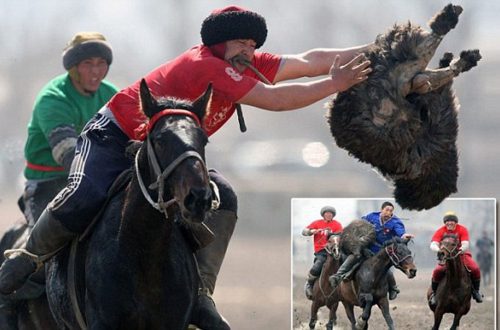
Triathlon Fit Features
Triathlon Fit Features
Proper posture is the foundation of riding. It gives a feeling of unity with the horse, allows you to control it subtly and imperceptibly. In this article, prominent American athlete and trainer Jim Wofford talks about the basics of triathlon landing.
The first thing riders notice is how important the speed factor becomes as a triathlete progresses from beginner to pro.
Louis (Paddy) Neilson and Haffaday clear the legendary 13th hurdle of the 1971 Maryland Hunt Cup.
Perhaps few triathletes know as much about cross country as Paddy, the rider who won the Maryland Hunt Cup three times, where “dead” obstacles sometimes reach a height of one and a half meters and are built from wooden logs, poles and planks. So, Daddy has repeatedly noted: “Mistakes at speed are expensive!”
The phrase Paddy is a terrible reminder that the correct landing on routes of this level is the key to your safety. To protect you from accidents and injuries, it must be flawless, because speed increases the severity of the consequences of your mistakes.
The higher the level, the shorter the stirrups
The correct position of the rider at the lower level competitions is the same as the classic show jumping: the putlis should be of such a length that allows you to maintain a 90º angle between the thigh and lower leg.
If you compete in entry-level competitions, then you keep the length of the stirrups both in show jumping and in cross-country. The cross-country speed is not high, the obstacles are not so serious.
But with the complexity of the routes, the speed also increases. In such a situation, you will need to reduce the length of the putties so as to close the angle of the thigh. This will allow you to stay in balance and in contact with the horse. Raise the stirrup by 2,5 cm with each increase in the difficulty level of the competition, with each star. For example, at 1* competitions, the difference between jumping and triathlon stirrups is 2,5 cm, at 2** level competitions it is 5 cm, and so on.
Some triathlon coaches suggest a return to the seat used in the 18th century: the rider rode standing on long stirrups. Fortunately, studies have confirmed its ineffectiveness. Such a seat has a bad effect on the quality of the horse’s canter, and already this is enough to not use it.
Regardless of the length, the putliche must form a straight vertical line in any phase of the jump and in motion. The stirrup will not properly support your weight if the stirrup is not upright.
Some riders try to ride short stirrups in saddles that are not designed for this. As a result, on landing, the leg goes back. If you have such a saddle, do not shorten the stirrups, even if it threatens to lose speed. Use the length as for show jumping.
If you are going to take part in speedcross, you must make sure that your horse is balanced and responds correctly to the controls.
You should not interfere with the horse by sitting on short stirrups at a speed of about 30 km/h. We require horses to perform the most difficult jumps, and we are obliged to help them by following their movements and being in balance.
You can improve your fit by constantly working on it. Before working at a trot or canter, try to shorten your stirrups by at least one notch.
Can you trot for a long time on a two-point landing? Often riders are not able to do this even during a long trot warm-up and change to a normal three-point landing. Even if you fail, try to drive as much as you can. It will pay off on the route. Working with short stirrups is no doubt hard work, but once you get the hang of it, your cross-country performance will improve exponentially.
After you have worked with the short stirrups for a while and then returned to the normal lengths used in show jumping, the stirrups will appear to be much longer than they previously felt. This effect is similar to riding without stirrups to improve dressage riding. After the lesson without stirrups, it seems to you that they are too short, although you have not changed the length of the stirrups at all.
Sacrificing sensitivity for security
Cross-country speed makes a few more adjustments to your fit. If in show jumping your foot rests on the stirrup in its wide part and the little finger is located at the outer temple, then for triathlon you will need to move the foot deeper into the stirrup: its wide part will be against the inner temple. In this position, the foot becomes less flexible and sensitive, but the rider will be safer this way. The shorter the stirrups, the more difficult it is to take them back after the loss and the more consequences such a loss can entail. Remember, speed amplifies the consequences of your mistakes.
When the competition is in the rain, the soil turns to mud, and the tread of the stirrups and your soles become slippery, it is better to put your foot as deep as possible in the stirrup: let your heel touch the bottom of it. Yes, it’s against the rules, but it’s better to sacrifice sensitivity and keep it safe.
When cantering, remember to keep the reins short. If you adjusted the reins while you were in the saddle, then when you get into a two-point position, it will be too long (your body will go forward towards the horse’s neck).
Bruce Davidson – triathlete, gold medalist of the Olympic Games and World Championships. His victories are undoubtedly the result of his great experience and knowledge in all three areas: cross-country, dressage and show jumping. In the photo, he and Appolinax clear the 13th hurdle at the 1983 Maryland Hunt Cup. His strong position in the saddle is maintained by the position of the leg and foot.
Stillness at speed
Now it’s time to discuss your general position in the saddle during the canter.
On average, 20 to 30 obstacles are placed on the cross-country. This is an impressive figure, but the entire course will fit in just a few hundred gallop rates. Moving from obstacle to obstacle will take you longer than jumping. Therefore, you need to decide on the position that will be the safest and most efficient when moving along the route at a high speed canter.
The name may vary depending on the terminology, but most often such a landing is called a two-point landing. Your weight is transferred to the knees and shins, and the body is above the horse’s back.
You must not mount, but you must not ride lightly. Get as close to the saddle as possible. Your torso should be leaning forward at about a 45º angle with your elbows in front of your pelvis.
You can check your seating position in the arena, if it is equipped with mirrors, or have someone film you.
Make sure you dampen your horse’s movements with your knees and shins, not your hips. It should feel like you are standing on a trampoline, cushioning in your knees. Look at your shadow when you are on horseback. Make sure that the distance between the saddle and the seat does not change, and that your body does not move back and forth. If such movements are present, it will mean that you are not balanced, and this will interfere with your horse.
You must sit at a gallop as calmly as possible. This is easy to understand but difficult to put into practice. Learn your landing on video, ask other riders and coaches for tips, watch other riders work. Show perseverance and patience. Success in modern triathlon requires excellence in every discipline. You must work on all fronts. To cross-country, it is not enough to train only in dressage and show jumping. Work on the cross, work on yourself and then victory will be just around the corner.
Jim Wofford; translation by Valeria Smirnova (source)





